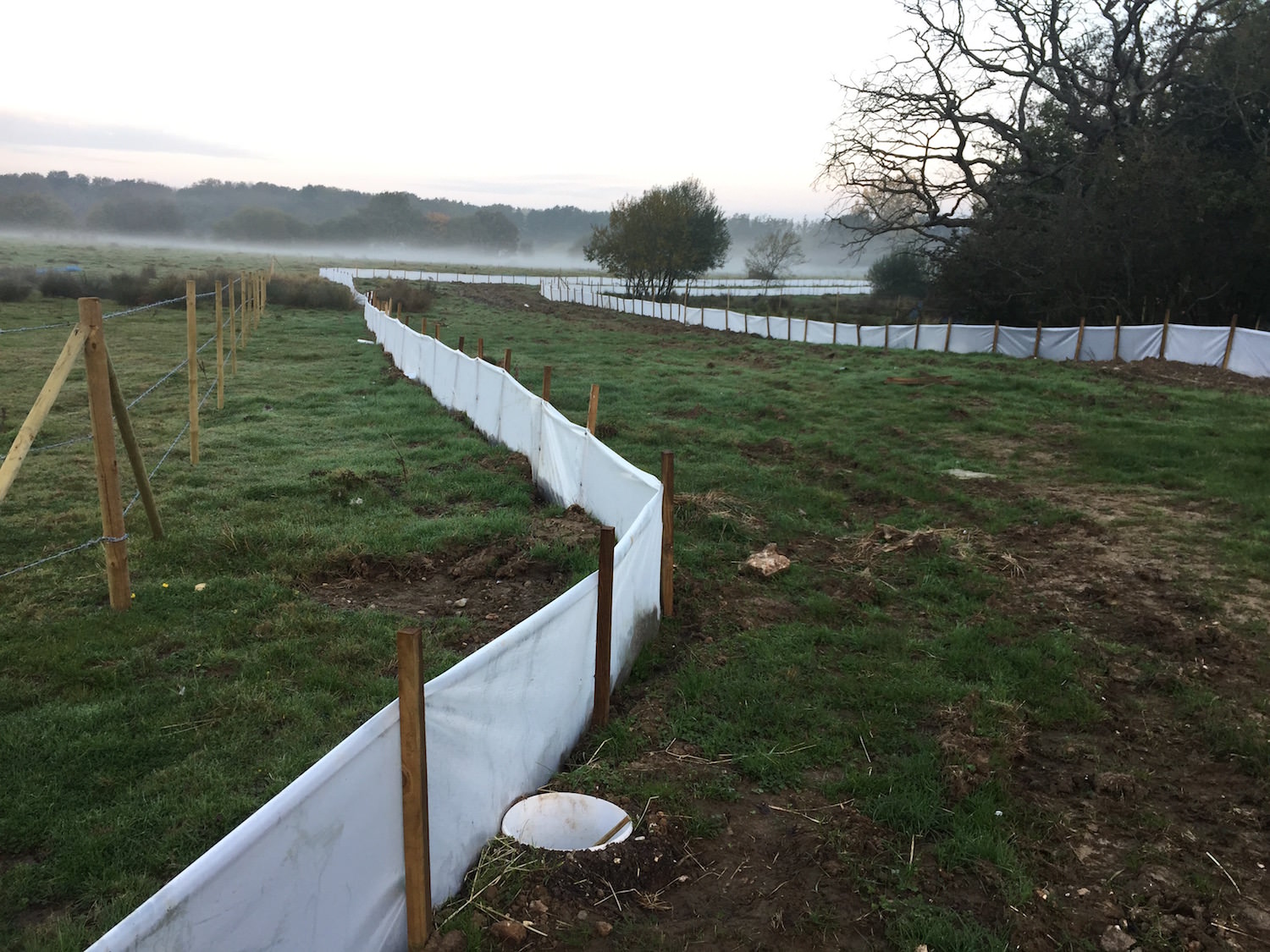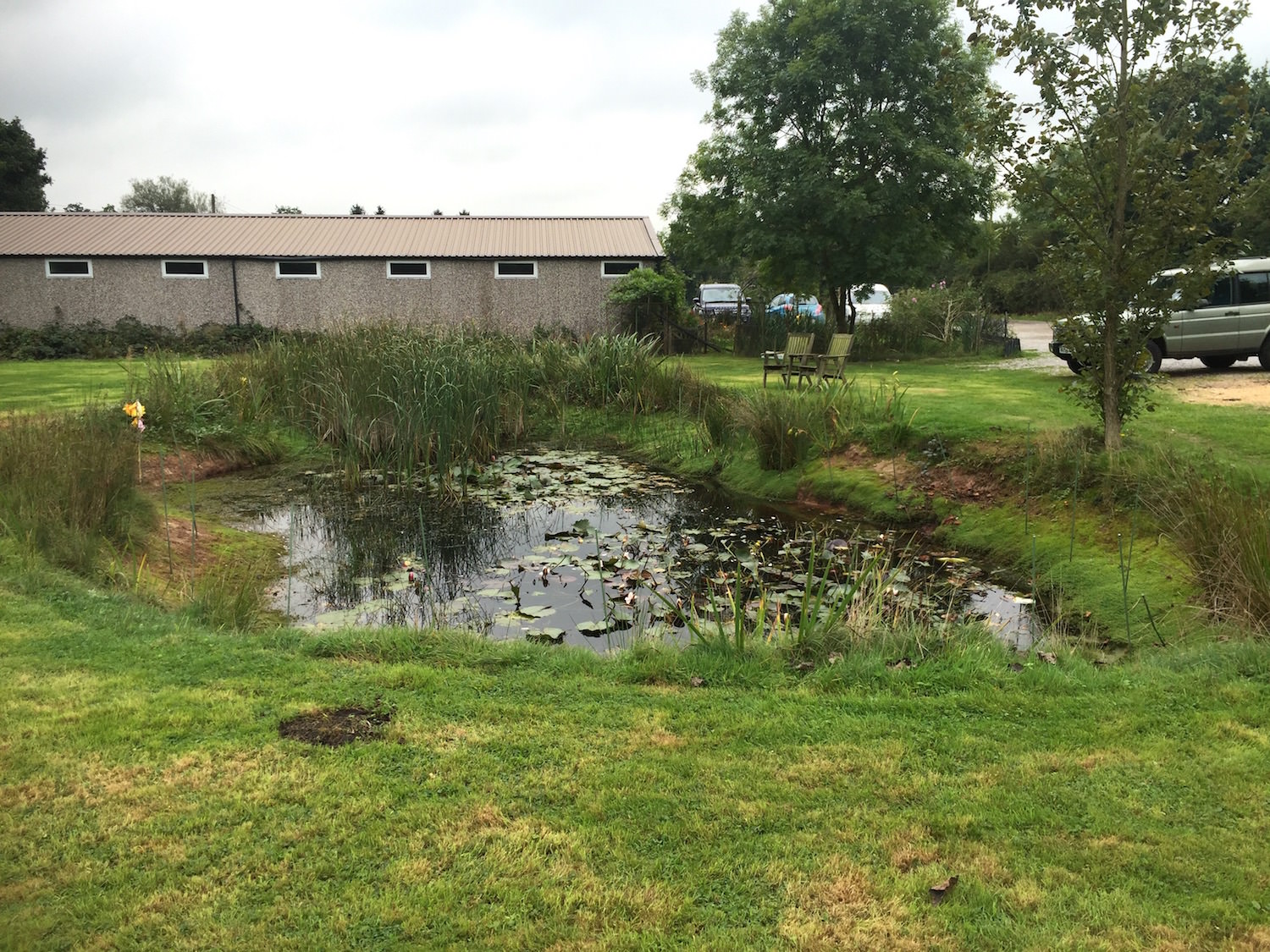GREAT CRESTED NEWT SURVEYS FROM LICENCED ECOLOGISTS
Great crested newt habitats are protected by UK law. If great crested newts are identified on or within 500m of your site, you may need a newt licence in order for work to continue. Licences enable work to be carried out on-site that otherwise would be considered illegal.
It is an offence to:
Kill, capture or disturb them
Damage or destroy their resting places or obstruct access to such areas
Damage or destroy a great crested newt breeding site
Possess a great crested newt or any part of it, unless acquired lawfully
Sell, barter, exchange, transport, or offer for sale
Great crested newts or parts of them.
Great crested newt protection in the UK
To secure a newt licence, local authorities will require a detailed newt survey from ecologists and a following report of findings.
Great crested newt surveys may also be recommended as the result of an ecological scoping survey or preliminary ecological appraisal.
Secure a great crested newt licence
Ecological surveyors will conduct a newt survey on-site to determine the presence of newts as well as assess the potential damage a development project may cause. Depending on the likelihood of the impact your project may have on a newt habitat, there will be various steps to take to secure planning permission.
Call Ecology By Design today on 01865 893346 or email hello@ecologybydesign.co.uk
Newt survey methodology
As well as a detailed report of any findings, Ecology by Design will provide you with a mitigation plan to help ensure your development project can continue with as minimal delay as possible. Our services include a detailed great crested newt report that will be considered by planning authorities when you apply for planning permission.
When is the best time to conduct a newt survey?
GCN surveys can only be conducted between mid-March and mid-June. Half of the visits are conducted between mid-April and mid-May. If newts are identified in any of the first four visits, then an additional two on-site visits will be needed. Check out our ecology survey calendar for more information.
Great crested newt surveys: FAQs
Types of habitat for a great crested newt
Ponds and surrounding vegetation are popular habitats for British newt species, and their presence can easily be determined by an experienced and licenced ecological surveyor.
Typical great crested newt habitats include:
Ponds
Woodland
Rank grassland
Scrub Grasslands and woodland
Hedges
Dry stone walls
Ditches/ culverts
Gardens / allotments
What are the stages of a great crested newt survey?
Stage one
Assessment of all ponds within 500m of your site.
The assessment is known as a habitat suitability index (HSI)
This takes into account ten variables such as
Pond size
Shading
Vegetation present
This data is used to calculate the likelihood of the pond supporting newts.
Stage two
The pond HSI scores and habitats between them we then determine if a full great crested newt survey is required.
This is also based on the likelihood of your work having an impact on great crested newts.
Stage three
A full great crested newt survey can be very intensive and involves surveying a pond on between four and six occasions.
Different techniques are used to record the presence or absence of newts.
What types of newt can be found in the UK?
There are three species commonly found in the UK including:
Smooth newt (sometimes called common newt)
Palmate newt
Great crested newt
How to identify a great crested newt
They are the largest newt species in the UK
They have Jet black or olive green skin with white warts
Look for a bright orange belly with black spots
During the breeding season, males have a wavy crest along their back
Read Ecology by Design’s Ecology Guidelines on Great Crested Newt Surveys for more information.
GCN surveys and environmental DNA (eDNA)
A new technique called environmental DNA (eDNA) takes water samples from your pond & analysing the sample for the presence of newt DNA.
This can be a cost-effective solution. However, if newts are present then a full newt survey is still required.
eDNA is also restricted to the period from mid-April to the end of June.
Why?
Great crested newts are fully protected under the Conservation of Habitats and Species (amendment) (EU Exit) Regulations 2019 as European Protected Species. It is illegal to:
- Intentionally or deliberately capture, kill, or injure them;
- Intentionally or recklessly damage, destroy, and disturb them in a place used for shelter or protection, or obstruct access to such areas;
- Damage or destroy a great crested newt breeding site or resting place;
- Possess a great crested newt, or any part of it, unless acquired lawfully; and
- Sell, barter, exchange, transport, or offer for sale great crested newts or parts of them.
The usual ‘trigger’ for a great crested newt survey requirement is a request from your planning consultant, architect or the local authority so a report can be submitted with a planning application. Great crested newt surveys may also be recommended as the result of an ecological scoping survey or preliminary ecological appraisal
There are also five other species of amphibian native to the UK and protected by law in some form. Natterjack toads receive the same legal protection as great crested newts. Common frog, common toad, palmate newt and smooth newt are protected against sale or trade only.
We are often asked why great crested newts are protected. In short they are protected by law because within Europe the population is declining and within the UK we support a large proportion of the declining population. The population is declining largely due to a loss of ponds and suitable habitat.
What do you have?
Determining the species of newt is important with three species commonly found in the UK including smooth newt (sometimes called common newt), palmate newt and the great crested newt (some times called the warty newt). The great crested newt is easy to identify compared to the others. Great crested newts are the UKs largest newt species, they are jet black or olive green with white warts and a bright orange belly with black spots. During the breeding season the males have a wavy crest along their back.
where are they found?
Great crested newts are native to the UK and are widespread but patchy across the UK and absent from Ireland. Newts can occur both on land and in water and commonly occur in garden ponds. Individual newts are often found under refugia such as log and brash piles.
What do we do?
There are generally three stages to a standard survey for great crested newts. The first stage includes an assessment of all ponds within 500m of your site. The assessment known as a habitat suitability index (HSI) takes into account ten variables such as pond size, shading and vegetation present to calculate a score/ category for the likelihood of the pond supporting newts.
Taking into account your site, the pond HSI scores and habitats between them we then determine if a full great crested newt survey is required based on the likelihood of your work having an impact on great crested newts.
A full great crested newt survey can be very intensive and involves surveying a pond on between four and six occasions using different techniques to record the presence or absence of newts. These surveys are constrained by the season and can only be conducted between mid-March and mid-June with at least half of the visits between mid-April and mid-May. If newts are identified in any of the first four visits the full six visits are then required.
A new technique called environmental DNA (eDNA) can also be utilised and involves taking water samples from your pond and analysing the sample for the presence of newt DNA. This is much cheaper than a full survey but if newts are present a full survey (above) is then still required. EDNA is also restricted to the period from mid-April to the end of June.
Licence application and mitigation
If great crested newts are identified on or within 500m of your site and any impacts on the species cannot be adequately avoided, a licence may be required to enable the work to proceed.
Licences are issued by the statutory authorities; Natural England (England), Natural Resources Wales (Wales) and Scottish Natural Heritage (Scotland). Licences enable work that would otherwise be considered illegal following an agreed method to a given timeframe. Licences are legal documents and must be strictly adhered to.
For some species including great crested newts there are also an alternative licence available called a low impact licence. This enables works on low impact sites to continue with a much reduced licence application/ site registration and with work undertaken in the presence of a consultant registered to utilise the licence.
Mitigation for great crested newts can take many forms and is adapted to the project, landscape and timing.







